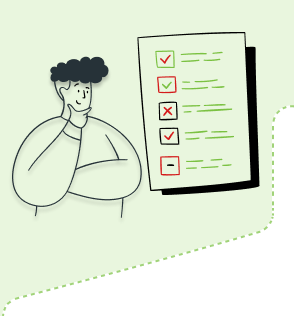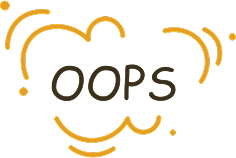
Courses

Join now

Courses

Join now
NATIONAL AND STATE NURSING EXAM- MCQ _MG_00 190

“ Your score is /25 ”
0
25
Show Answer
1. The risk of HIV infection after needlestick injury with HIV infected blood is:
a. 1:200
b. 1:50
c. 1:100
d. 1:300
Answer: d. 1:300
Description:The risk of HIV infection after a needlestick injury with HIV-infected blood can vary depending on several factors, including the viral load of the source patient, the depth and type of needlestick injury, and whether post-exposure prophylaxis (PEP) is administered promptly. However, as of my last knowledge update in September 2021, the estimated risk of HIV transmission from a needlestick injury with HIV-infected blood is generally considered to be around 1 in 300 (option d). This risk can be reduced significantly if PEP is started promptly after the injury. It's important to note that these estimates are not precise, and healthcare workers should always follow proper safety protocols and seek immediate medical evaluation and PEP if they experience a needlestick injury involving potentially HIV-infected blood. For the most current information and guidance, it's advisable to consult with a healthcare professional or refer to the latest guidelines from health authorities, as the understanding of HIV transmission risks and prevention strategies may have evolved since my last update.
2. Which of the following actions is most likely to prevent diaper rash in infants?
a. Wash with a mild cleanser and water and dry thoroughly whenever stooling has occurred.
b. Wipe the buttocks with oil and powder the creases while changing the diaper
c. Wash with soap before applying a thin layer of oil
d. Wash with soap and water every time diaper is changed
Answer: a. Wash with a mild cleanser and water and dry thoroughly whenever stooling has occurred.
Description:The most likely action to prevent diaper rash in infants is option a: "Wash with a mild cleanser and water and dry thoroughly whenever stooling has occurred." Diaper rash is often caused or exacerbated by the irritation and moisture that can result from contact with stool or urine. Washing the infant's bottom with a mild cleanser and water after each stooling and ensuring that the area is thoroughly dried can help prevent diaper rash. It's important to avoid using harsh soaps or excessive cleansing, as this can further irritate the baby's sensitive skin. Options b, c, and d involve using soap, oil, or powder, which may not always be necessary and could potentially irritate the baby's skin further. The key is to keep the diaper area clean and dry to reduce the risk of diaper rash.
3. Ringworm frequently found in school age children is caused by which of the following?
a. Protozoa
b. Viral infection
c. Fungus
d. Allergy
Answer: c. Fungus
Description:Ringworm, a common skin infection, is caused by a fungus. So, the correct answer is: c. Fungus
4. Women are at higher risk for Human Papillomavirus (HPV) genital infections because;
a. Of their weak immune system compared to men
b. They are passive partner in sexual act
c. Of their hormonal influence
d. They have a larger mucosal surface area exposed in the genital area.
Answer: d. They have a larger mucosal surface area exposed in the genital area.
Description:Women are at higher risk for Human Papillomavirus (HPV) genital infections because they have a larger mucosal surface area exposed in the genital area. This larger surface area provides more opportunities for the virus to infect cells and establish an infection.
5. The substances that causes tissue necrosis and damage particularly when extravasated are:
a. Apoptosis
b. Interleukins
c. Vesicants
d. Retinoids.
Answer: c. Vesicants
Description:Apoptosis is programmed cell death seen in multicellular organisms. Interleukins are class of glycoproteins produced by leukocytes for regulating immune responses. Vesicants are chemical substances which cause severe skin, mucosal, eye and skin irritation. Retinoids are chemical compounds which are related to vitamin A.
6. The activities of a person engaged in believing himself ill is the characteristic of:
a. Wellness behavior
b. Health behavior
c. Sick-role behavior
d. Illness behavior
Answer: c. Sick-role behavior
Description:Illness behavior is the manner in which person monitors bodies and defines and interprets symptoms and takes remedial actions and utilizes various sources of help. Wellness behavior is a multifaced approach to living that promotes being well in all areas of life. Health behaviors are activities undertaken for preventing or detecting disease or for health and wellbeing.
7. Which among the following is an excitatory amino acid receptor antagonist?
a. Phencyclidine
b. Homocystate
c. Kainate
d. Quisqualate
Answer: a. Phencyclidine
Description:An excitatory amino acid receptor antagonist/glutamate receptor antagonist is a chemical substance which antagonizes one or more of the glutamate receptors. The drugs include AP5, Barbiturates, Dextromethorphan, Dextrorphanol, Dizocilpine, Ethanol, Ibogaine, Ifenprodil, ketamine, kynurenic acid, Memantine, Nitrous oxide, permapanel, Phencyclidine.
8. All among the following are cellular adaptations; EXCEPT:
a. Hyperplasia
b. Metaplasia
c. Atrophy
d. Hypertrophy
Answer: c. Atrophy
Description:Atrophy is breaking down and reabsorption of tissues. Hypertrophy means increase in cell size, hyperplasia is increase in cell numbers and metaplasia is reversible transformation of one type of differentiated cells to others.
9. Which one of the following is an example for a non-economic good?
a. Banker’s service
b. Doctor’s service
c. Mother’s service
d. Teacher’s service
Answer: c. Mother’s service
Description:Expect mother’s service which is unpaid all other are economic good.
10. “Transportation of triglycerides from liver to adipose tissues is the function of which of the following lipoprotein?
a. Intermediate density lipoprotein
b. High density lipoprotein
c. Very low density lipoprotein
d. Low density lipoprotein
Answer: c. Very low density lipoprotein
Description:Transportation of triglycerides from liver to adipose tissues is the function of very low density lipoprotein
11. Cell concentration techniques include all of the following; EXCEPT:
a. Centrifugation
b. Cytospin
c. Cell block preparation
d. Plasmapheresis
Answer: d. Plasmapheresis
Description:Plasmapheresis is a technique used to separate plasma from blood components and is not typically used to concentrate cells. The other options (centrifugation, cytospin, and cell block preparation) are indeed methods used to concentrate or isolate cells for various purposes.
12. Anemometer is used to measure:
a. Air temperature
b. Air velocity
c. Humidity
d. Air pollution
Answer: b. Air velocity
Description:An anemometer is used to measure air velocity, specifically the speed of the wind.
13. Which of the following is the leading cause of death among adolescents?
a. Stress related illness
b. Suicide
c. Communicable disease
d. Accidents.
Answer: d. Accidents.
Description:Accidents, often referred to as unintentional injuries, are the leading cause of death among adolescents.
14. Unwanted but unavoidable pharmacodynamic effects of a drug at therapeutic dose is known as:
a. Hypersensitivity
b. Toxic effects
c. Side effects
d. Idiosyncrasy
Answer: c. Side effects
Description:Unwanted but unavoidable pharmacodynamic effects of a drug at a therapeutic dose are known as side effects.
15. A drug can:
a. Diagnose disease
b. Cure disease
c. Prevent disease
d. All of these
Answer: d. All of these
Description:Drugs can be used for diagnosing disease (e.g., contrast agents in imaging), curing or treating disease (therapeutic drugs), and preventing disease (prophylactic drugs or vaccines). The specific role of a drug depends on its intended use and mechanism of action.
16. Loading dose of a drug is given:
a. To achieve high concentration in short time
b. To avoid complication
c. To minimize side effects.
d. For rapid onset of action
Answer: a. To achieve high concentration in short time
Description:A loading dose of a drug is administered to quickly reach a high concentration of the medication in the body, allowing it to have a rapid onset of action and achieve the desired therapeutic effect more swiftly. This is especially important when immediate treatment is needed or when it takes time for the drug to reach its target concentration through regular dosing.
17. The maximum effect of a drug is defined by:
a. Adversity
b. Potency
c. Therapeutic index
d. Efficacy
Answer: d. Efficacy
Description:The maximum effect of a drug is defined by its efficacy. Efficacy refers to the drug's ability to produce the desired therapeutic effect or maximum response. Potency, on the other hand, is related to the dose of the drug required to produce a specific effect, while the therapeutic index assesses the safety of a drug by comparing its effective dose to its toxic dose. Adversity is not a term typically used in this context.
18. Drugs used for rare disease are know as:
a. Over the counter drugs
b. Rare drugs
c. Orphan drugs
d. Emergency drugs
Answer: c. Orphan drugs
Description:Drugs used for rare diseases are known as orphan drugs. These are medications developed to treat medical conditions that affect a small number of people, typically rare diseases or conditions that may not have attracted significant research and development efforts due to their limited patient populations.
19. Which of the following is true of placebo?
a. Placebo is a dummy medication
b. Placebo is the inert material added to drug for making
c. Placebo is an additive added with the drug during manufacturing
d. All patients respond to placebo.
Answer: c. Placebo is an additive added with the drug during manufacturing
Description:A placebo is a substance or treatment that has no therapeutic effect and is often used as a control in clinical trials to compare the effects of a real drug or treatment against the response in the absence of active medication. It is not an inert material added to a drug for manufacturing or something that all patients respond to.
20. Pharmacodynamic includes:
a. Drug absorption
b. Drug elimination
c. Drug excretion
d. Mechanism of action
Answer: d. Mechanism of action
Description:Pharmacodynamics is the study of how a drug exerts its effects on the body, including its mechanism of action. It examines how drugs interact with their target receptors or sites in the body to produce specific physiological or therapeutic effects. Drug elimination, drug excretion, and drug absorption are primarily related to pharmacokinetics, which is a different aspect of drug action that focuses on drug absorption, distribution, metabolism, and excretion within the body.
21. The substances derived from living organisms that are used to kill or prevent the growth of bacteria is known as:
a. Antibiotics
b. Antidotes
c. Antihistamines
d. Antipyretics
Answer: a. Antibiotics
Description:Substances derived from living organisms that are used to kill or prevent the growth of bacteria are known as antibiotics. Antibiotics are a crucial class of drugs used to treat bacterial infections.
22. Drugs used to reduce the increased temperature of the body are called as:
a. Antibiotics
b. Analgesics
c. Antipyretics
d. Antihistamines
Answer: c. Antipyretics
Description:Drugs used to reduce an elevated body temperature (fever) are called antipyretics. These medications help lower fever and provide relief from fever-related symptoms.
23. Drugs used to relive pain are known as:
a. Antibiotics
b. Analgesics
c. Antipyretics
d. Antihistamines.
Answer: b. Analgesics
Description:Drugs used to relieve pain are known as analgesics. These medications are used to alleviate various types and levels of pain, ranging from mild to severe.
24. Drugs which increase urinary excretion is known as:
a. Antidiuretics
b. Diuretics
c. Laxatives
d. Vasopressin
Answer: b. Diuretics
Description:Drugs that increase urinary excretion by promoting the removal of excess salt and water from the body are known as diuretics. They are commonly used to treat conditions like high blood pressure, edema (fluid retention), and certain kidney disorders.
25. Which of the following is an example of urinary antiseptic?
a. Cresol
b. Furosemide
c. Nitrofurantoin
d. Hypochlorite
Answer: c. Nitrofurantoin
Description:Nitrofurantoin is an example of a urinary antiseptic. It is an antibiotic commonly used to treat urinary tract infections (UTIs) by preventing the growth of bacteria in the urinary tract.
Back

Please Answer Minimum Five Questions


